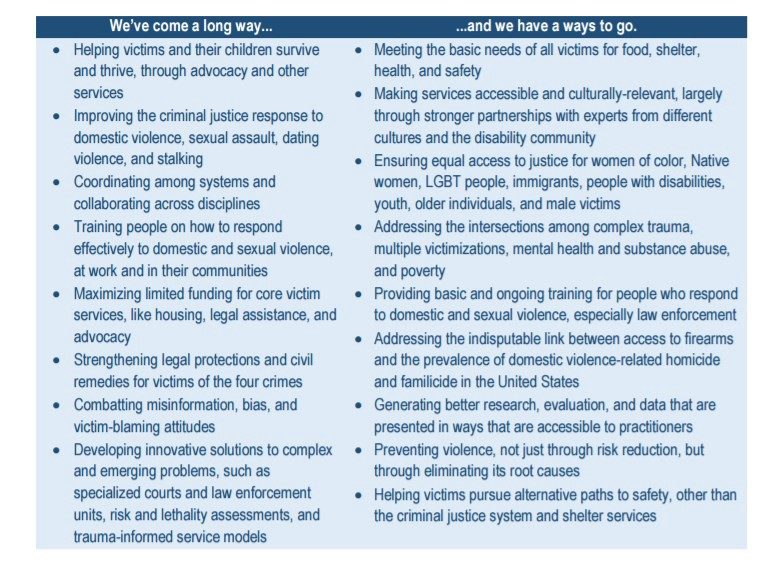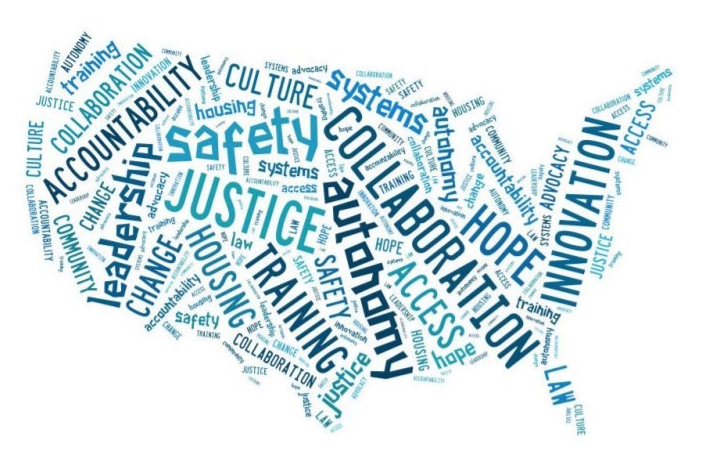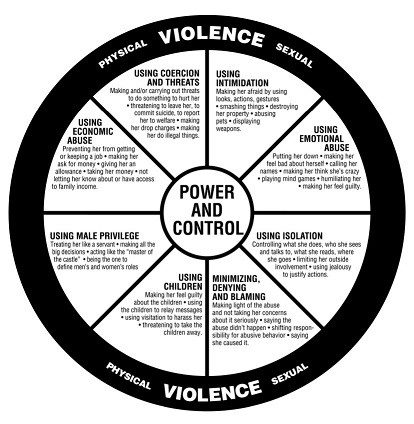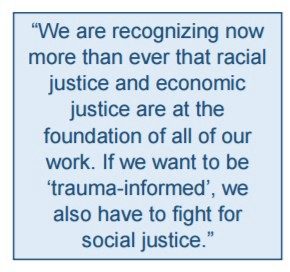The politicization of domestic violence by feminists began in the 1960s and '70s, with a small network of shelters for women escaping domestic violence. As was borne out by the experience of Erin Pizzey, who established the first shelter for domestic violence victims in the UK in 1971, the goal of the women's shelters was not actually to address the multifaceted issue of interpersonal violence, and seek solutions for couples affected. Rather, it was to establish the concept of the now well-known "patriarchy" as a conspiracy with frightening motives.
Women's liberation was about encouraging women to not only question their marriages, but to expand the characterization of the in fact, rare occurrence of what was then called, "wife battering" to include almost all women as victims.
Comment: Seems the feminist movement attempted to stop Erin Pizzey's good intentions to open a shelter. Erin Pizzey's own words on why and how she established the first domestic violence shelter in the UK:
Most women of day were unaware of the political motives behind what was known as "the women's liberation movement." We would not discover the radical leftist political backgrounds of such popular authors as Betty Friedan, Gloria Steinem, and Simone de Beauvoir until much later. (Betty Friedan tried to hide her political leanings as best she could.)
In 1977, feminists declared at the National Women's Conference in Houston that "Wife abuse is chronic and widespread at all economic and social levels."
By the 1980s, the issue had gained the attention of a group of self-styled "feminist legal scholars," at least some of whom were no doubt considering means to future advancement of their practices. They were able to persuade a few states to establish committees to examine gender bias in their court systems, and the US Congress established a similar project in 1988.
Larger graphic available here(PDF)
Enter the Duluth Model
Probably the most important element of today's approach to domestic violence is called "The Duluth Model." Literally every program, and every shelter in the United States is based on what they call "the curriculum," which was conceived in 1981, in Duluth, Minnesota. It was developed by a "small group of activists in the battered women's movement" with five battered women and four male perpetrators as subjects.
"Over several months, we convened focus groups of women who had been battered. We listened to heart-wrenching stories of violence, terror, and survival. After listening to these stories and asking questions, we documented the most common abusive behaviors or tactics that were used against these women. The tactics chosen for the wheel were those that were most universally experienced by battered women."Consider this: an entire generation of Americans has been raised on this seriously biased, inadequate research, and intentionally political view of a complex human issue. When you think of the thousands of families, perhaps millions of individuals who've been forced to comply with these at best, ineffective ideals, since the 1980s, you may find it as horrifying as I do.
VAWA Becomes Law
In 1993, in the Congressional hearings prior to the passage of VAWA, much of the same hysterical language about "wife-battering" that had become ubiquitous since the 1970s was used in testimony. Senator William Cohen of Maine, who was known as a leftwing Republican, claimed "that an act of domestic violence occurs every 18 seconds and that some 6 million women are beaten each year by their husbands and boyfriends and that 4,000 women each year die as a result." He also invoked the "English common law principle that a man could beat his wife with a rod not thicker than his thumb. This "rule of thumb" was included in Sir William Blackstone's codification of the British common law in 1768 which influenced early American judicial thought." Both of those statements have been either disproven as fabrication, or discredited as low-level number doctoring.
There was a lot of this sort of obfuscation and fabrication going on in the years leading up to VAWA. The purpose of all this was to make highly unusual and frightening occurrences appear common, even pedestrian, so that every woman would fear for their safety at the hands of men.
There is more to VAWA than most people think. It is not only about domestic violence, but it also includes sexual assault, dating violence and stalking. When it was first enacted in 1994, it was promoted as a way to "protect" women from a claimed epidemic of violent crime, motivated by gender.
Never mind there were already laws in place regarding things like assault, which applied to everyone on an equal basis, without regard to gender. Now when something bad happened to a woman, it would be considered a "gender-based" crime, a crime which would be addressed in far different ways than before. This was only another way for the government to insert itself into the private lives of the American people.
In addition to establishing the federal Office on Violence Against Women, as part of the Department of Justice, VAWA also provided for Domestic Violence Coalitions in each of the 56 US states and territories. The new law also provided $1.6 billion in initial funding. Though a variety of grant programs, more than $6 billion has gone to communities across the country since then.
In 2000, the aspect of VAWA which allowed victims to seek recourse in civil court was challenged and removed. Properly indoctrinated angry women can no longer sue their designated perpetrator for damages.
VAWA Today
Since its first inception, VAWA has been reauthorized several times; in 2000, 2005, and 2013. Each time, VAWA has expanded its reach a little more, with special attention given to housing programs, people of color, and adding bureaucracy. They've also pushed the pretense that services are equally available to both men and women, though in practice men are still perceived as perpetrators. The generally-accepted definition of the problem has expanded to be, as Phyllis Schlafly once said, "Anything a woman says it is."
Today, even a fear that she might be victimized in some way is enough for a woman to press charges against a man.
Despite a burgeoning number of approaches, initiatives, conferences, organizations, websites and summits, there is still no evidence that VAWA does anything but send out money across the country, and make a greater number of people feel that "something is being done" about domestic violence. Despite many hours of research over 17 years and looking for more-recent information over the past two weeks, I have still been unable to find any evidence of even one woman who completed a shelter program, and emerged with her life and family intact, functioning autonomously without dependence on government programs. I found a number of self-selected, basically worthless studies on shelter residents' attitudes toward the shelter and services they received, administered either during their stay or at their exit, but of course they were overwhelmingly positive. The few "outcomes" studies I found were mostly about whether the shelters followed the rules of their grants and spent the money appropriately.
By now you may well wonder what it is the local shelters do. The following is from the Arizona Coalition Against Domestic Violence: (any emphasis will be mine) Since the state coalitions are in charge of assigning funding to individual shelters, any program that does not follow their guidelines/ideology will not be funded.
The current Arizona Service Standards and Guidelines for Domestic Violence Programs were developed by the Shelter Standards Subcommittee of the State Agency Coordinating Team (SACT) as well as staff from the Arizona Coalition Against Domestic Violence. Members of the subcommittee include administrators from state agencies, member programs and staff of the AzCADV.
Defining Principles of the Service Standards and Guidelines
- These standards and guidelines are to be used as a guide for best practices in the operation of a domestic violence program;
- Violence against women is rooted in the institutional imbalances of power between men and women, in sex-role stereotyping, in gender-based values and in misogyny;
- A survivor of domestic violence is not responsible for the abuse;
- The safety and rights of survivors must be the highest priority;
- Policies and procedures of domestic violence programs should not do harm;
- Programs for victims who are battered and their children must provide options and referrals;
- Confidentiality is paramount; domestic violence programs have a responsibility to the survivors requesting or receiving services
5. A domestic violence shelter must:
a. Maintain safety and security of residents as described in the program's policies;
b. Ensure that crisis intervention services are accessible, available and offered 24 hours a day, every day of the year, with trained advocates on-site to provide face-to-face emergency services;
c. Provide food, emergency clothing and personal hygiene items for residents and their children, free of charge;
d. Not require residents and non-residents to participate in religious groups or to use religious materials; and
e. Provide education and information about:
i. The nature and dynamics of domestic violence;
ii. How persons who batter maintain control and dominance over their victims;
iii. The need for persons who batter to take responsibility for their actions;
iv. The recognition that individuals victimized by domestic violence have choices when making future life decisions and that persons who batter are responsible for their violent behavior; and
v. The role of society in perpetuating violence against women and the social change necessary to eliminate violence against women, including the elimination of discrimination based on ethnicity, color, gender, age, sexual orientation, disability including substance abuse, economic or educational status, religion, HIV/AIDS or health/mental health status, and national origin.(Please note these are highlights only from a 37-page document which can be found here in PDF.)
Since the document was from 2012, it would appear very little has changed in the ensuing decades since VAWA was first enacted. There is a large section that outlines policies and procedures for legal aid, which is a primary function of their services. Promotion of the irrational idea that divorce and relocation is a viable solution continues. I once used an analogy for their approach: Your house is on fire, so naturally, thinking the fire department is there to help, you call 911. Instead of putting out the fire, they bring a large bulldozer and tear down the house, disregarding the fact it is still in flames. Before they leave, the firefighters inform you that you should never attempt to rebuild the house; because houses that catch on fire are bad houses, you should take the insurance money, if any and run.
It's clear to me that despite the fact the Duluth Model has proven to be worthless, programs still adhere to the same principles. Men are still the automatic perpetrators, women are always victims. What's worse is the men under attack by violent wives have no way of protecting themselves. Their right to self-defense in domestic violence cases has been cancelled.
Meanwhile, the Domestic Violence Industry Congratulates Itself
Here are some excerpts from 20 years of the Violence Against Women Act - Dispatches from the Field
This was a publication of the federal Office on Violence Against Women, available here as PDF
In 1990, when it was first introduced, the Violence Against Women Act gave a new name and a new voice to an ancient tragedy. To name something new is to have an idea of a better future. But a better future cannot exist without the hard work over months and years of many, many women and men - survivors and advocates, prosecutors and police, scientists and state officials. Over the course of twenty years, VAWA has become a mosaic built by hundreds of thousands of Americans - from public servants to state officials and survivors - all of whom have helped the nation emerge from a fog of dismissal and distrust.Furthermore, housing programs that place unrealistic expectations and strict rules on residents can prevent victims from leaving and not returning to their abusers. One participant, highlighting the importance of the voluntary services model supported by OVW Transitional Housing grants, said: "It's not just the money, it's the philosophical way in which OVW has given us the money that has been really critical."

Conclusion
Through it all remains the delusion (or is it an outright lie?) that a few more millions of dollars, increasingly restrictive laws and creative indoctrination will actually stop domestic violence. That it won't doesn't matter, because stopping domestic violence is not the true goal, a topic I will discuss next time.






Comment: